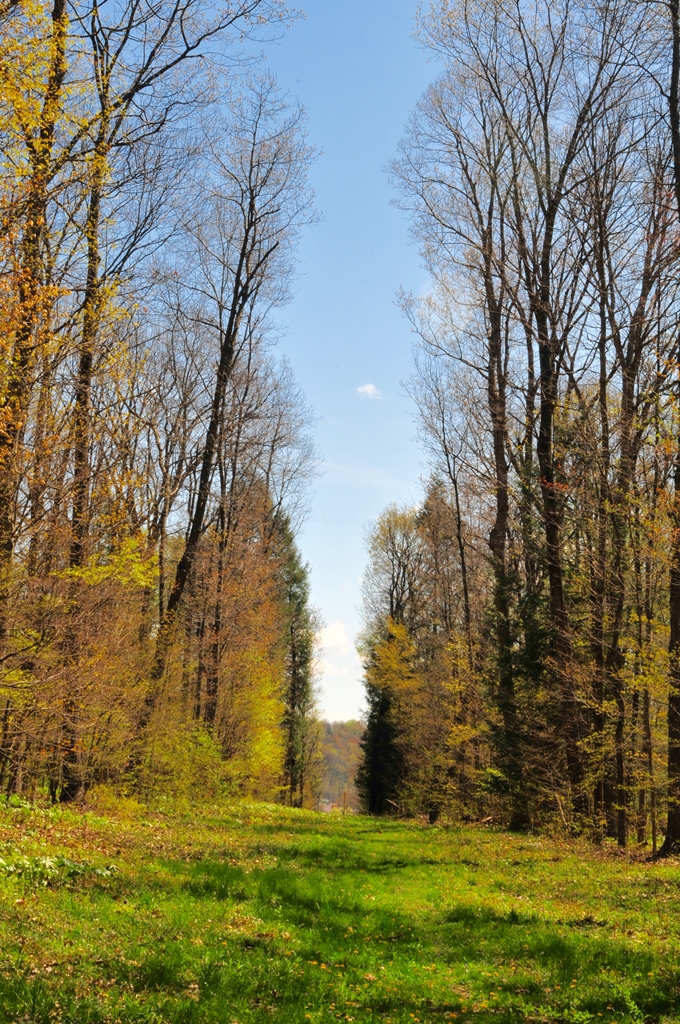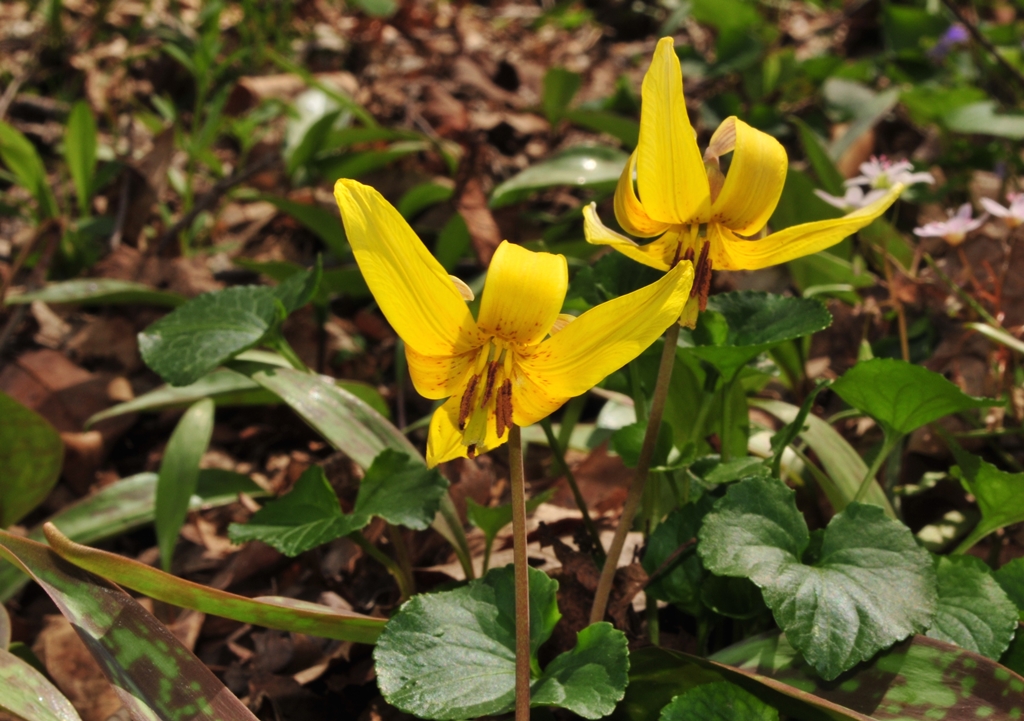|
By Philip M. McConnell, Duquesne University, Environmental Science and Management Program
 Duff Park is a hidden gem tucked away just off of Route 22 along a commercial corridor in Murrysville, PA. Its beauty is known by many in the region but few outsiders have heard of this scenic place. The park is a conservation-oriented 147-acre area brimming with biological diversity (1). A nature reserve which has been designated a Wild Plant Sanctuary, it shelters over 60 species of wildflowers, and contains one of but a handful of old growth deciduous forests left in Pennsylvania (1). The park also boasts over five miles of trails with hikes ranging from “relaxing walk to strenuous workout” (2). In addition to this, a proposed portion of the Westmoreland Heritage Trail, currently under construction, will run beside this park, allowing for easy access to trail users and connecting the area from Trafford to Export through a regional greenway (3). This is an important development since future hopes are that this trail will ultimately link into the West Penn Trail to the west and the Great Allegheny Passage to the east (3). Duff Park is a hidden gem tucked away just off of Route 22 along a commercial corridor in Murrysville, PA. Its beauty is known by many in the region but few outsiders have heard of this scenic place. The park is a conservation-oriented 147-acre area brimming with biological diversity (1). A nature reserve which has been designated a Wild Plant Sanctuary, it shelters over 60 species of wildflowers, and contains one of but a handful of old growth deciduous forests left in Pennsylvania (1). The park also boasts over five miles of trails with hikes ranging from “relaxing walk to strenuous workout” (2). In addition to this, a proposed portion of the Westmoreland Heritage Trail, currently under construction, will run beside this park, allowing for easy access to trail users and connecting the area from Trafford to Export through a regional greenway (3). This is an important development since future hopes are that this trail will ultimately link into the West Penn Trail to the west and the Great Allegheny Passage to the east (3).

In addition to offering scenic and recreational opportunities, the park has also become an outdoor classroom where the public learns about the importance of conservation and the environment. For example, signs along the trails draw attention to important plant species, lists have been published showing the bloom times for over 60 wildflowers throughout the park, and hikers are even asked to do their part by removing invasive species as they move along its trails (1). Furthermore, the park has recently held its second BioBlitz organized by Dr. Kyle Selcer, associate professor at Duquesne University’s Bayer School of Natural and Environmental Sciences, which offers a unique program for both graduate and undergraduate students in Environment Science and Management.
A BioBlitz is a biological survey of an area conducted over a short period of time in attempts to document as many living species as possible. The ultimate goal of such a survey is not only to record what is there but also to increase public awareness of biodiversity through community participation (4). With those goals in mind, the September 2014 event was a huge success; over 175 people attended, and 300 species were documented over a 24-hour period. As a result the event not only championed the cause of environmental awareness but also helped to show the park’s ecological significance. This is important because as the park sees an increase in hikers from the Westmoreland Heritage trail, so too shall we see an increase in public awareness to the benefits of conservation. Ultimately, we could not ask for a greater legacy from such an extraordinary place.

If conservation interests you and you would like to make a career out of protecting the environment, contact the Environmental Science and Management Program at Duquesne University by calling (412) 396-4095 or sending an email to envscience@duq.edu.
Works Cited:
1. Aiken, Betsy. (n.d.) Duff Parks Native Wildflowers and Trees – Westmoreland County, Pennsylvania. Department of Conservation and Natural Resources. Retrieved here.2. Murrysville Trail Alliance. (n.d.) Duff Park. Retrieved from: http://www.murrysvilletrail s.org/park_trails_duff.htm
3. Regional Trail Corporation. (2013) Acquisition of the Turtle Creek Railroad Corridor for the Westmoreland Heritage Trail. Retrieved from: http://www.murrysvilletrails.org
4. Amateur Entomologists’ Society. (2015) BioBlitz. Retrieved from: http://www.amen tsoc.org/insects/glossary/terms/bioblitz
|
 Duff Park is a hidden gem tucked away just off of Route 22 along a commercial corridor in Murrysville, PA. Its beauty is known by many in the region but few outsiders have heard of this scenic place. The park is a conservation-oriented 147-acre area brimming with biological diversity (1). A nature reserve which has been designated a Wild Plant Sanctuary, it shelters over 60 species of wildflowers, and contains one of but a handful of old growth deciduous forests left in Pennsylvania (1). The park also boasts over five miles of trails with hikes ranging from “relaxing walk to strenuous workout” (2). In addition to this, a proposed portion of the Westmoreland Heritage Trail, currently under construction, will run beside this park, allowing for easy access to trail users and connecting the area from Trafford to Export through a regional greenway (3). This is an important development since future hopes are that this trail will ultimately link into the West Penn Trail to the west and the Great Allegheny Passage to the east (3).
Duff Park is a hidden gem tucked away just off of Route 22 along a commercial corridor in Murrysville, PA. Its beauty is known by many in the region but few outsiders have heard of this scenic place. The park is a conservation-oriented 147-acre area brimming with biological diversity (1). A nature reserve which has been designated a Wild Plant Sanctuary, it shelters over 60 species of wildflowers, and contains one of but a handful of old growth deciduous forests left in Pennsylvania (1). The park also boasts over five miles of trails with hikes ranging from “relaxing walk to strenuous workout” (2). In addition to this, a proposed portion of the Westmoreland Heritage Trail, currently under construction, will run beside this park, allowing for easy access to trail users and connecting the area from Trafford to Export through a regional greenway (3). This is an important development since future hopes are that this trail will ultimately link into the West Penn Trail to the west and the Great Allegheny Passage to the east (3).
